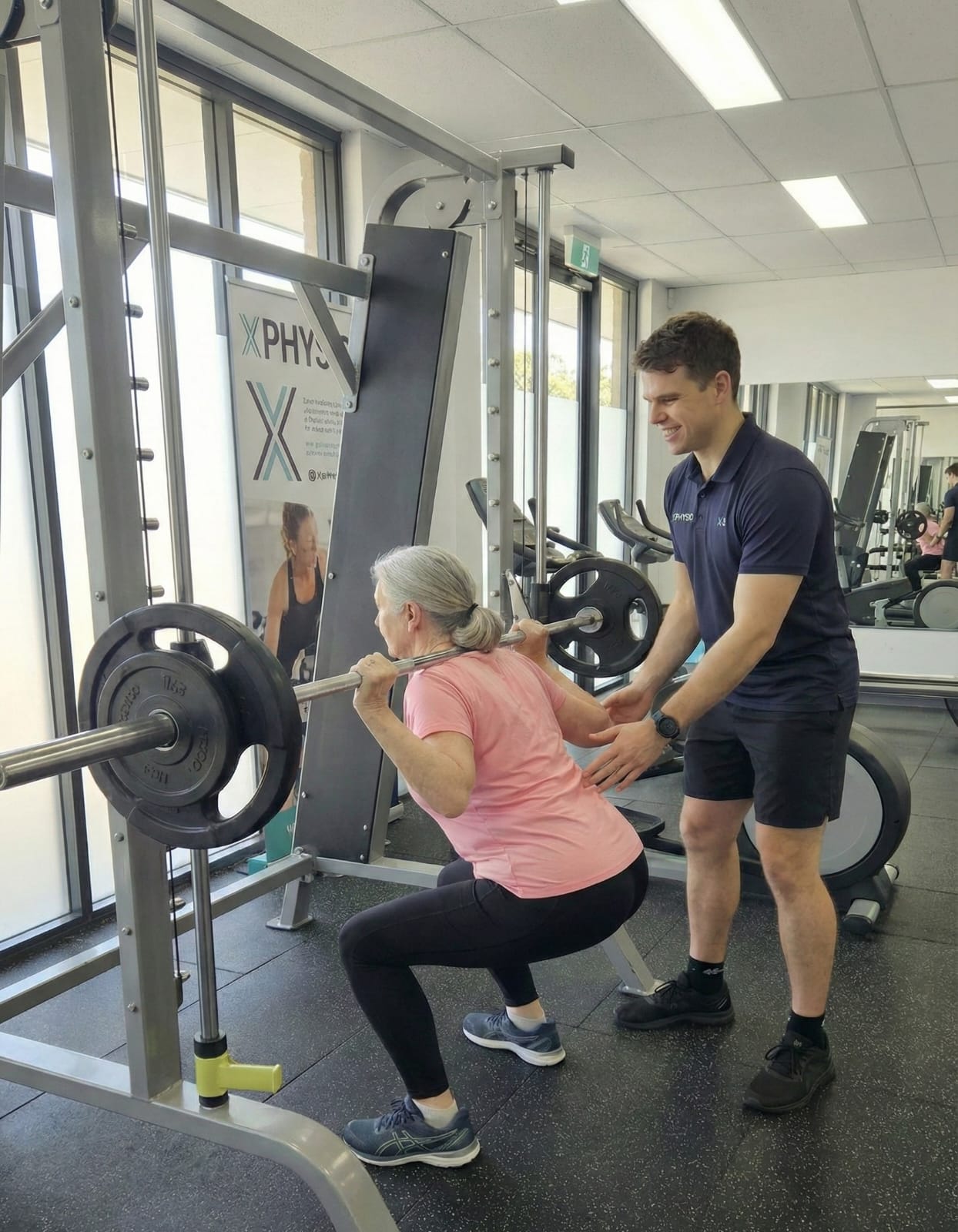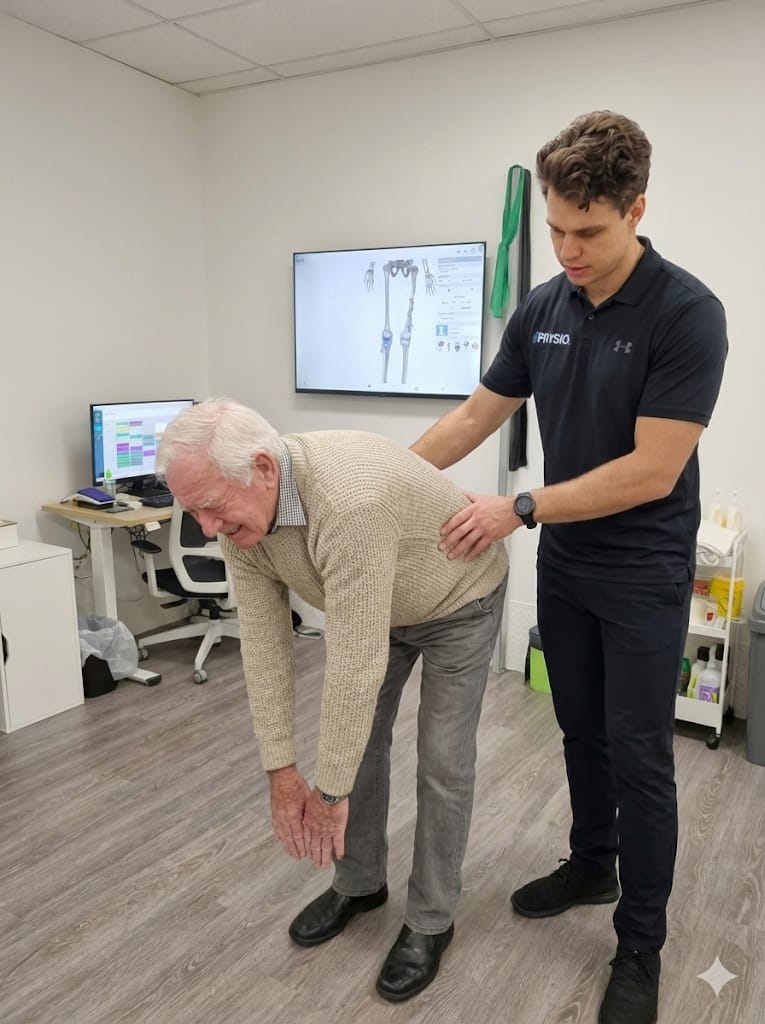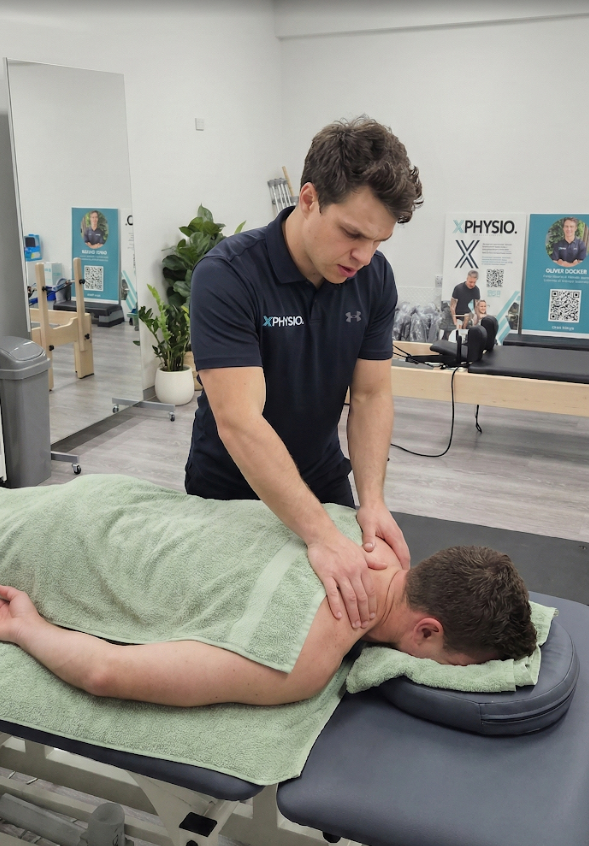
50) How to Bounce Back Fast From a Soft Tissue Injury – A Physio’s Guide
A soft tissue injury like a sprain, strain, and tear can derail your plans fast — but they don’t have to keep you sidelined. In this blog, we’ll show you how to manage these injuries properly from day one, avoid common mistakes, and recover stronger than ever with expert physiotherapy.
What is a Soft Tissue Injury?
A soft tissue injury involes damage to the muscles, ligaments, or tendons. They can happen suddenly (like twisting an ankle) or build up over time from repetitive use. These injuries are extremely common — especially in sport, exercise, and daily life — and they come in all shapes and sizes.
Common soft tissue injuries include:
- Muscle strains (e.g., hamstring tear)
- Ligament sprains (e.g., ankle or knee sprain)
- Tendinopathy (e.g., Achilles tendinitis)
- Contusions or bruises from direct impact
- Overuse injuries like tennis elbow or plantar fasciitis
Depending on the severity, a soft tissue injury can range from a mild inconvenience to a long-term issue if not managed properly.

The Golden Rule: Early Management is Key
The first 48 to 72 hours after an injury are crucial. This is when inflammation kicks in — and while that’s a normal part of healing, it’s easy to make things worse with the wrong approach.
What You SHOULD Do – Follow the PEACE & LOVE Protocol
Old-school advice like “RICE” (Rest, Ice, Compression, Elevation) has been updated. The latest evidence-based method is PEACE & LOVE — a guide that not only protects the injury but also promotes healing.
PEACE (First 1-3 Days):
- Protect – Avoid movements or loads that increase pain.
- Elevate – Keep the injured area above heart level when possible.
- Avoid anti-inflammatories – They may interfere with healing in the early phase.
- Compress – Use an elastic bandage or compression garment.
- Educate – Seek advice from a physiotherapist. Education prevents unnecessary rest or overloading.
LOVE (After the Acute Phase):
- Load – Begin pain-guided movement and loading to promote tissue repair.
- Optimism – Stay positive! Your mindset can influence your recovery.
- Vascularisation – Do cardio that doesn’t stress the injury (e.g., cycling, swimming).
- Exercise – Tailored exercises help restore mobility, strength, and function.
✅ Want a rehab plan built around YOU? Book in with our physio team here.

Signs You Might Need a Physio
A soft tissue injury will likely settle down with rest and self-management. But others need expert help.
Here are some red flags to look out for:
- Pain that doesn’t improve after 3–5 days
- Swelling that doesn’t go down
- Bruising and weakness
- Inability to weight bear/ walk
- Loss of joint range or strength
- History of recurring injuries in the same area
Physiotherapists assess the injury, determine the grade (1, 2, or 3), and build a personalised plan to restore strength, mobility, and confidence.
How Physio Helps You Recover Faster
Physiotherapy is a game-changer for a soft tissue injury. Here’s how we support you through recovery:
✅ Thorough Assessment
We start with a detailed assessment to diagnose the exact structure involved — whether it’s a ligament, muscle belly, tendon, or joint capsule. We’ll also check for underlying issues like poor biomechanics or past injuries that might have contributed.
✅ Hands-On Treatment
Depending on your injury, this may include:
- Soft tissue massage
- Joint mobilisation
- Taping or bracing
- Dry needling
- Lymphatic drainage for swelling
✅ Exercise Prescription
Tailored exercises help:
- Rebuild muscle strength
- Restore joint movement
- Improve tendon loading
- Prevent re-injury
We update your program as you progress — so you’re never stuck doing boring “cookie-cutter” exercises that don’t work.
✅ Return-to-Sport Planning
If you play sport, we guide you through a structured return-to-play program. That means no guessing — just science-backed progressions to get you back safely and with confidence.

Real Patient Story: Sophie’s Comeback From a Calf Tear
Sophie, a 42-year-old mum of two, came to our clinic after straining her calf during a netball game. She initially tried to “walk it off” but noticed swelling and pain that persisted for days. She was struggling to walk without a limp and couldn’t drive comfortably.
Our physio team diagnosed her with a Grade 2 medial gastrocnemius tear. Sophie started with compression and gentle isometric loading within pain-free limits. By week two, she progressed to gentle strengthening and hydrotherapy.
As swelling reduced, we introduced dynamic calf loading, single-leg balance work, and a return-to-running plan. Six weeks later, she was back on the netball court — moving confidently and pain-free.
Now, Sophie attends our clinic gym twice a week for lower limb strength and balance training. She hasn’t missed a game since.
Another common Soft Tissue Injury involves the hamstring, Read more by clicking HERE.
Common Myths Busted
❌ Myth 1: “I should rest until the pain goes away.”
Truth: Prolonged rest can delay healing. Early movement — when done properly — stimulates recovery.
❌ Myth 2: “I just need a scan to know what’s wrong.”
Truth: Scans don’t always match your symptoms. A good clinical assessment is often more useful, especially early on.
❌ Myth 3: “Once it feels better, I’m all good.”
Truth: Pain often settles before the tissue is fully healed. Without rehab, you risk re-injury.
Tips for Staying Active during A Soft Tissue Injury
Just because one area is injured doesn’t mean the rest of your body should go on holiday. Here’s how to keep moving safely:
- Use alternative cardio (e.g., cycling, rowing, swimming)
- Focus on unaffected areas (e.g., upper body weights if you’ve hurt a leg)
- Work on mobility and flexibility
- Use rehab as a chance to fix any imbalances
Movement supports circulation, mood, and overall health — all of which help with healing.

When Should I Return to Sport or Work?
Return depends on:
- The type and severity of the injury
- Your baseline fitness and health
- Whether you’ve restored strength, balance, and endurance
Our physios will assess your readiness using:
- Strength testing
- Functional movement analysis
- Sport-specific drills
Don’t rush back — returning too soon can cause setbacks that take even longer to fix.
Preventing Future Soft Tissue Injuries
Prevention is always better than cure. Here’s what we recommend:
✅ Warm Up Properly
A dynamic warm-up improves circulation and prepares tissues for activity.
✅ Build Strength
Strong muscles support your joints and absorb load better.
✅ Don’t Ignore Niggles
Minor aches can turn into major problems. Early physio can catch issues before they escalate.
✅ Load Management
Increase training load gradually — especially after a break or return from injury.
✅ Cross-Train
Don’t just repeat the same movement patterns. Mix in strength, mobility, and cardio work to stay balanced.
Final Thoughts: Don’t Tough It Out Alone
A soft tissue injury would be considered quite common, but when managed correctly, most people make a full recovery — and often come back stronger. The secret is knowing what to do (and what not to do) from the start.
Physio isn’t just about getting out of pain — it’s about building resilience, confidence, and long-term injury prevention.
Need help with a soft tissue injury?
Give us a call today on 9806 3077, or book online — just CLICK HERE.



